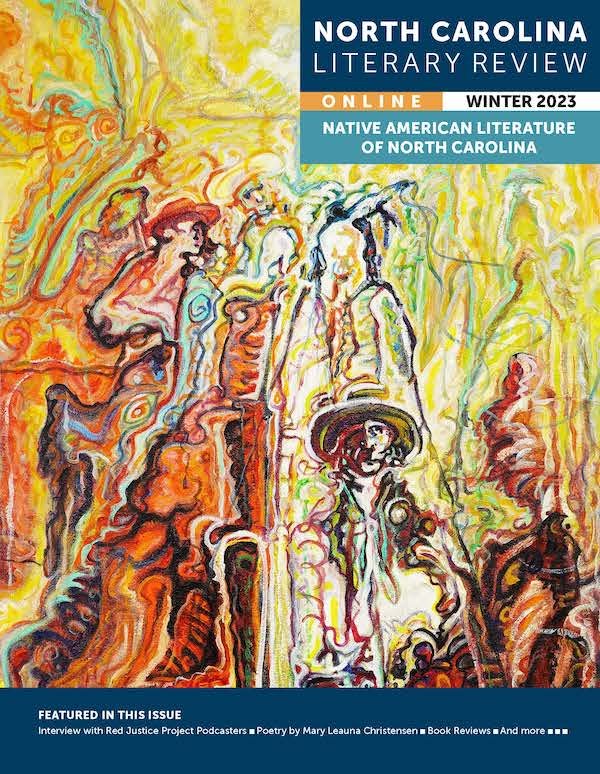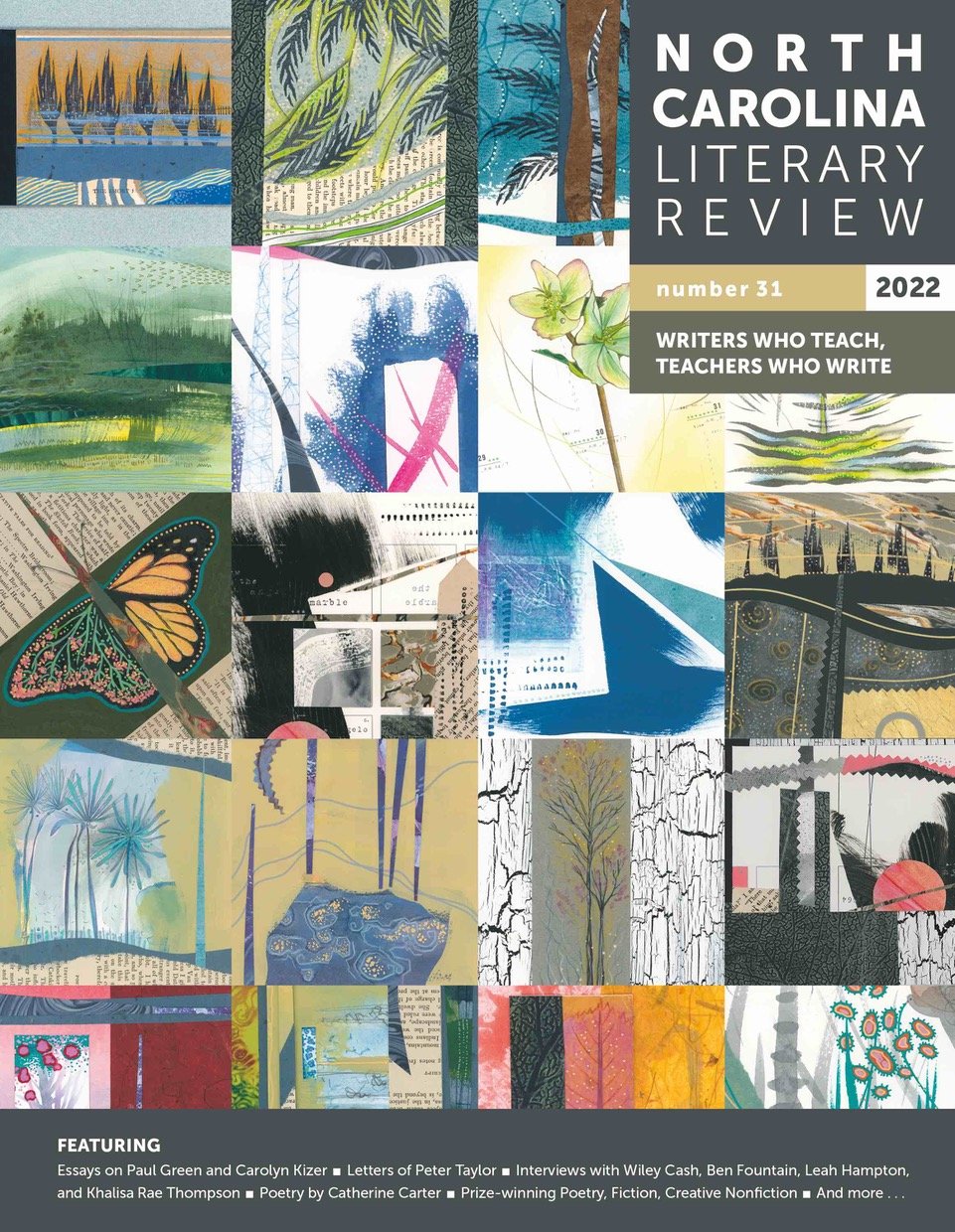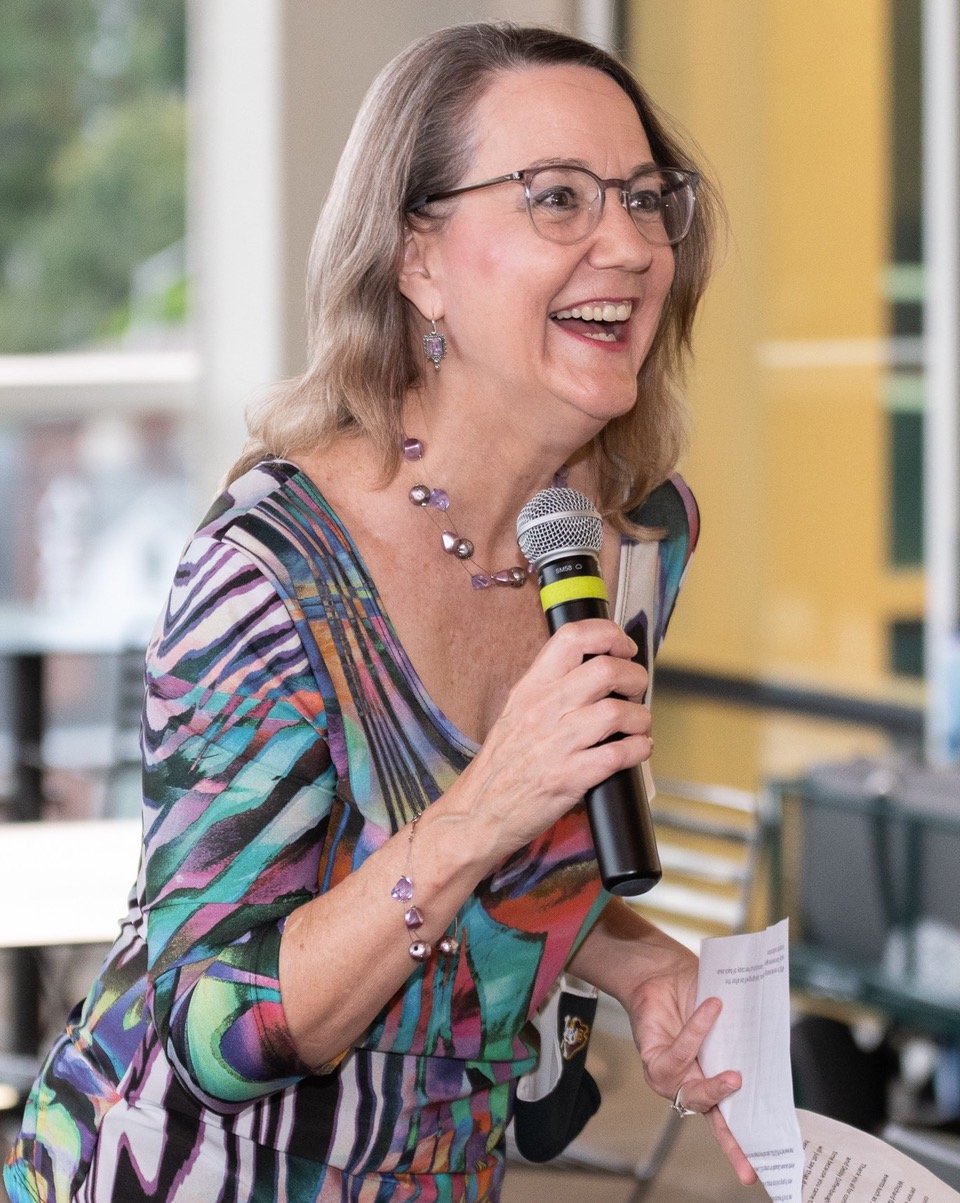North Carolina Literary Review
Margaret Bauer
Editor of North Carolina Literary Review
Debra Rae Cohen: To start, can you tell us about the history of the journal, and how you ended up getting involved with it?
Margaret Bauer: It was created by the North Carolina Literary and Historical Association as a companion to the North Carolina Historical Review, which had been around since 1924. As a Literary and Historical Association, it needed a literary review as well, but it didn't come around until 1992. When I interviewed for this job, they were hiring in southern literature, so they just thought [the editorship] was a natural pairing. And I was young and naive. I had no idea what I was getting into. I'm still learning.
NCLR is very hybrid: we have literary scholarship as well as creative writing. Our major mission is promoting North Carolina writers, not only the literary stars, but also new writers and forgotten writers. And so a lot of the scholarship has been to reintroduce writers that I was just finding out about. I also focus on getting new writers really substantive interviews. Our interviews are almost as scholarly as our papers, and our papers are not hardcore theory because our readership is both academic and non-academic. So we want the papers to be accessible to any reader.
Eugenia Zuroski: How long have you been editing the journal now? And how has it changed?
MB: I just finished my 25th year. The first 20 years was one print issue a year, 200 to 250 pages. They were getting huge. So in 2012, we added NCLR Online that comes out in the winter. We moved all the book reviews into that, and we started publishing the finalists of our creative writing contests. Also, if we got a multimedia piece and we wanted to link right to clips from it, that went into the online issue. And now we’ve added a Fall issue (online). So we're up to three per year—one print and two online.
The more substantive interviews and scholarly articles go in the print issue, unless, like I said, if it was multimedia, and we really wanted that convenience of direct access to the links. Every now and then we have a longer interview that we put in the online issue. This year, we have a really interesting essay about some new Lumbee children's book writers. Jane Halladay, who wrote the article, does a project with her class where they go into the school systems to teach Lumbee children's books to Lumbee children. Since we're doing a special feature section on Native American literature, it was for the print issue, but I said, this fits our new pedagogical initiative, too, so we're publishing it in both the print issue and the fall online because we want teachers to have access to it whether they have a subscription or not.
EZ: Can you tell us more about the pedagogical initiative, because that sounds really interesting.
MB: Since our mission is to promote North Carolina writers, one way is to get them into the classroom. North Carolina Humanities gave us a grant to pay teachers to write about how they use North Carolina authors in the classroom. It has been a challenge; I'm getting new voices who aren't used to writing for publication. Our first pieces will come out in the fall, all on African American writing of different kinds. Sometimes I feel like our scholarship is just for us [academics], that we’re the only ones that read it. But we have such great ideas in the classroom, and getting those ideas out so that other teachers can read and use them just seemed useful to me. We’re trying to make a kind of repository for these materials.
DRC: It sounds like you were doing a lot of things in terms of public access and digital materials that a lot of journals are just now catching up to. It's been hard in many cases for scholarly journals to convince their publishers that this is the way to go, or that the journals have a kind of obligation to make their material more widely shareable.
So, in terms of support, do you get any money from the organization to which you're tied?
MB: East Carolina University gives us most of our money, our main operating budget. The “Lit & Hist” Association gives us a budget each year, and I use that largely to pay writers and artists. And then of course, some of that budget goes to pay the press for the members copies. But I've been on a mission to make sure everybody is paid. I mean, not a lot, but something.
DRC: Do you differentiate there between the creative contributors and the scholarly contributors [in terms of payment]?
MB: Well, we were just paying the creative until this year, when I got more successful with grant writing. So I told my guest editors, guess what, I have some money left over here. So now we're paying everybody.
EZ: Are there any particular issues or articles that you've put out that you feel particularly proud of, or that represent what your journal does best?
MB: Well, the highlight of my life might be when I interviewed Charles Frazier [CELJ Note: The links in these two paragraphs lead to a paywall.] several times in 2012. We just hit it off. I ended up with two interviews because there was so much material. I love those kinds of moments where I've had these really fun interviews. Another one that I did was with Kat Meads, who's an eastern North Carolina writer. She wrote a novel called The Invented Life of Kitty Duncan. I love that novel, and it's gone out of print. So being able to get her on the page, and to get people to find out about her, has been great. We've had other people who do the interviews as well. One year, Kathryn Stripling Byer, who was North Carolina's Poet Laureate at the time, interviewed Elaine Neil Orr about her work. That was really great, having these voices come together—they ended up talking about each other's work. And that's typical of North Carolina; one of the things I really like is how the established writers embrace the new writers and want to promote their work.
For the 20th anniversary we did an environmental writing issue that was really interesting; I enjoyed that one very much. One of my graduate students interviewed David Gessner at UNC Wilmington for that one—we open the issue with it. And that's one of the things I love, is working with young people and getting them to write things. One year, Ron Rash and Terry Roberts both published novels about a German internment camp in western North Carolina during World War Two. There was a UNC graduate I knew, he was newly tenure track, or maybe not even tenure track yet, and I said, Zackary, I think you need to go out there and interview both these guys about these novels; let's get this in the issue on war literature (which we did in 2014). I’ve tried to match up subjects with the young people I know to get them involved. One of them is going to take my place one day, please. Eventually, I get to retire.
EZ: Do you have any hopes or visions for the future of the journal?
MB: Well, we've gone from one issue to three, and our website has now expanded. We added an editor's blog and an archive section. So every Friday, we're publishing from the archives; every Saturday, we're publishing a book review. One of the things I really want is for it to become a hub for people checking in weekly. So I did hire a digital editor last year with a grant and I'm hoping to keep her. During COVID, I had some trouble spending out a grant because somebody quit, so I hired a strategic planner, and he and I worked together, and realized I really was doing the job of four people, literally. And that's not counting being Professor Margaret Bauer. That was just as editor. So that’s the vision, to create a staff. The next editor should be able to come in and be an editor. I'm trying to hire a managing editor, this digital editor, and maybe an associate editor.
In the interim, I’ve asked a colleague to serve as guest editor of our Features section, my colleague Kirstin Squint, who's a Native Americanist. It's so important to introduce these Native poets—we have Cherokee, Catawba, and Lumbee represented. So that's exciting, and I would not have been able to do it without her. Coming up, we have guest editors to do features on disability literature, LGBTQ literature, and a veterans issue. And after the special feature, we have a flashback section in each issue. So when somebody says, Oh, I wish I'd known you were doing X, I would love to have interviewed so and so, or I have this article, I say, Never too late! We have the flashback section, send it in.



